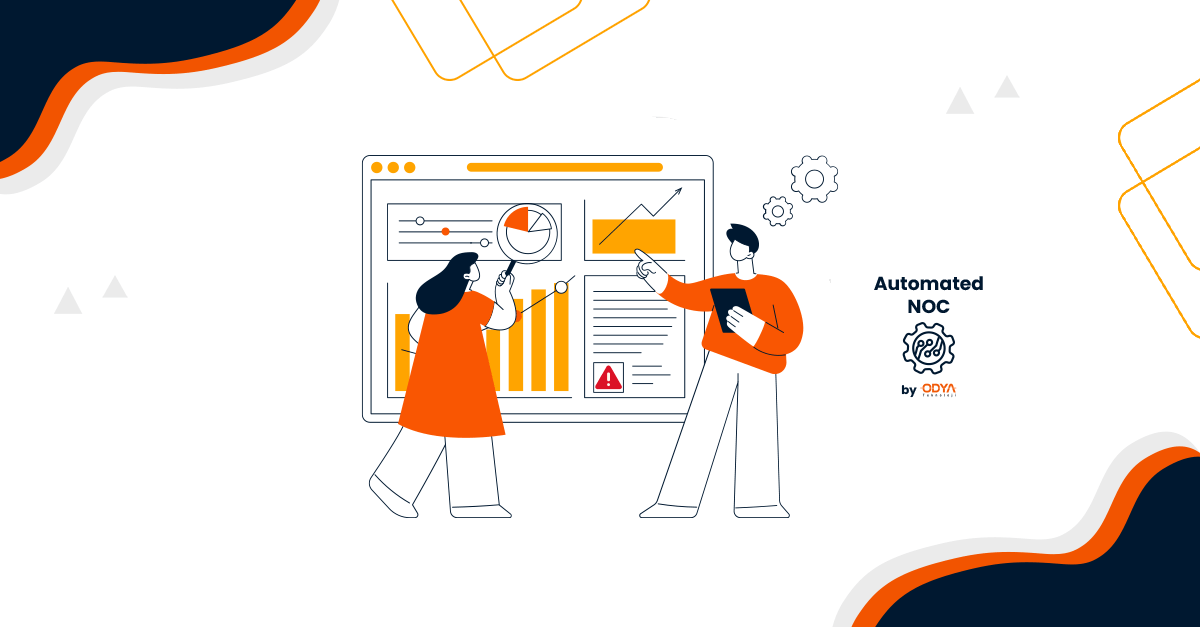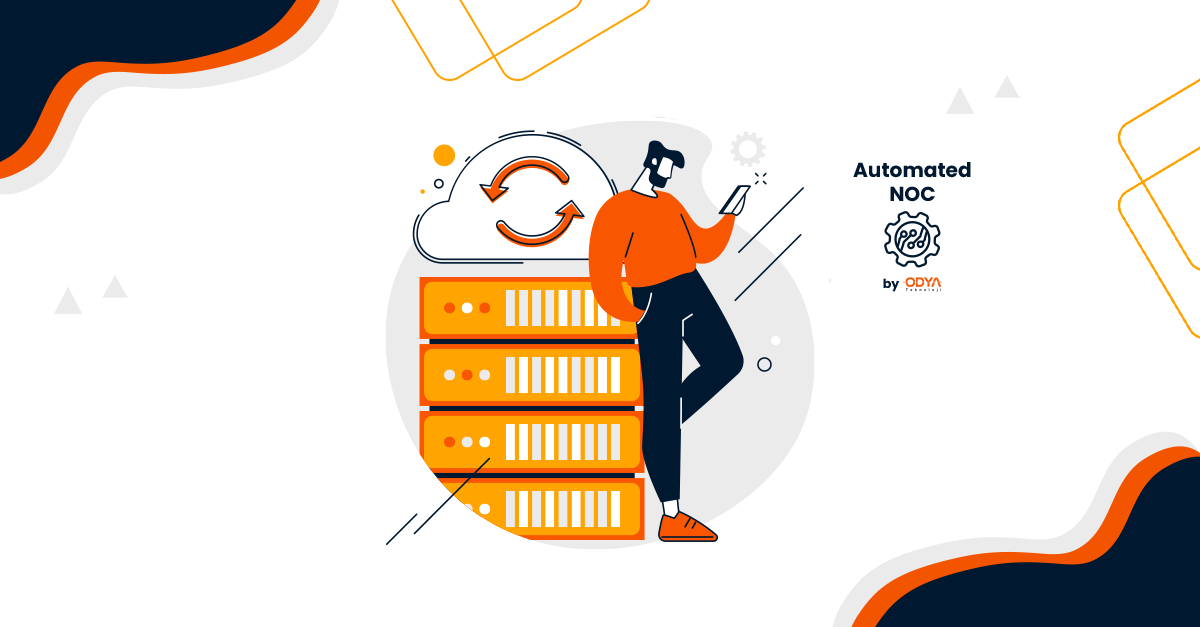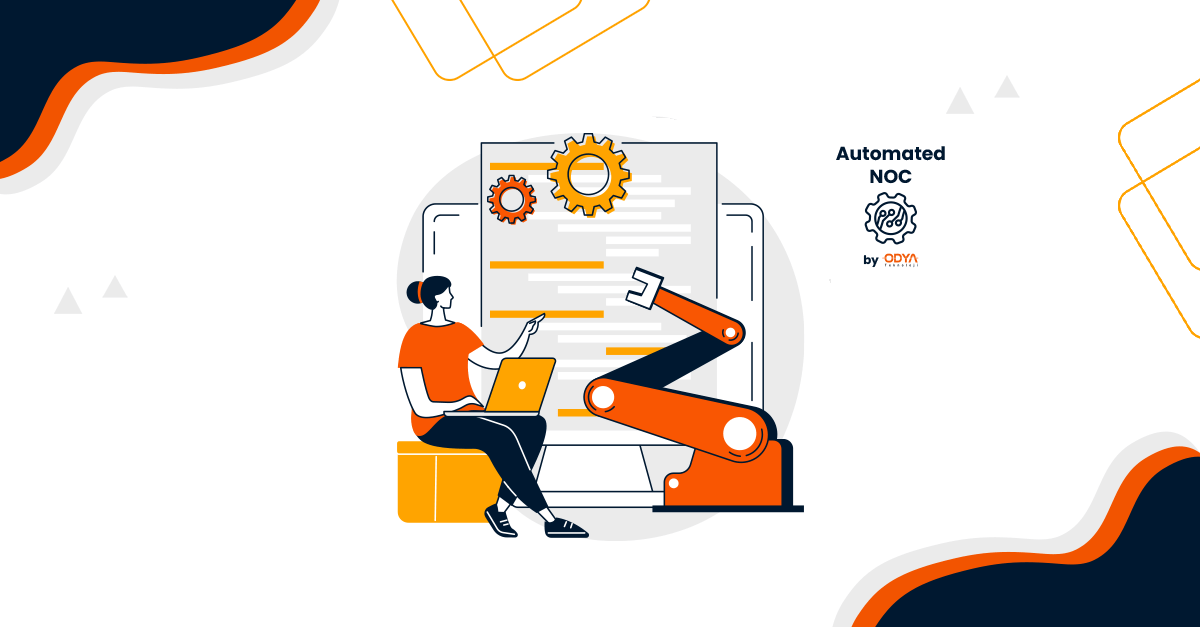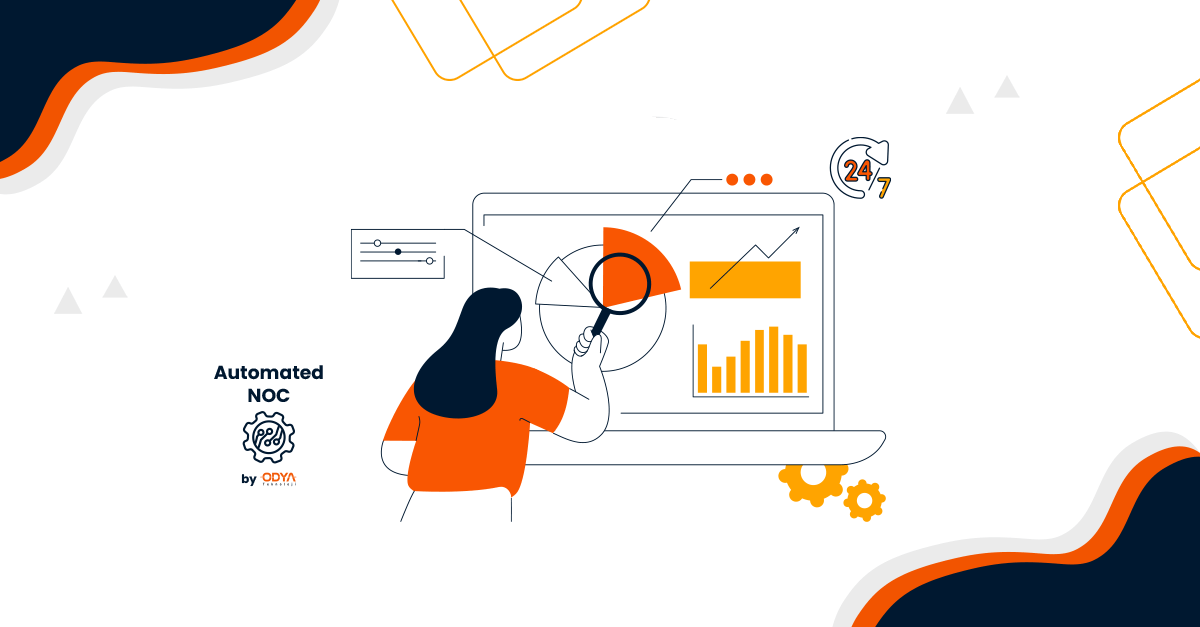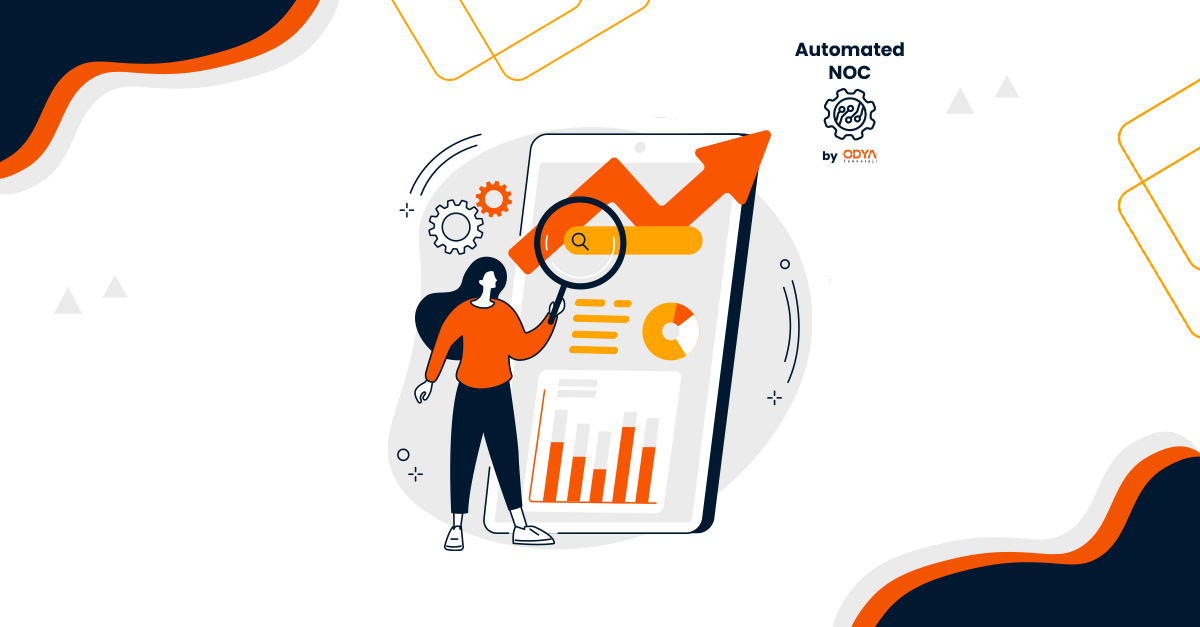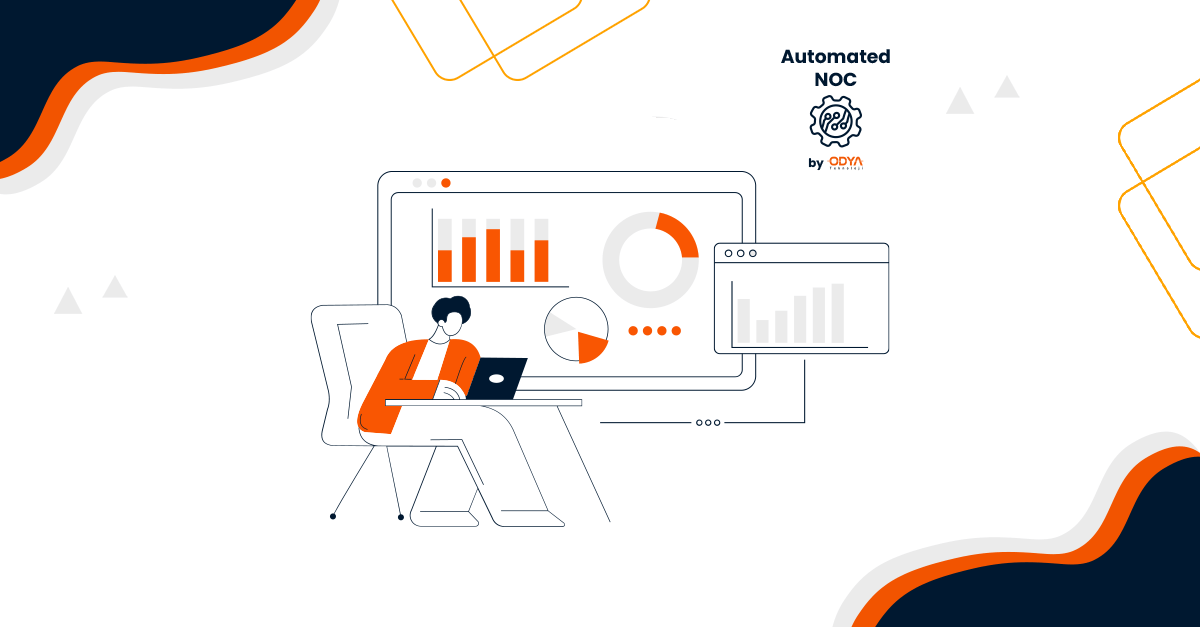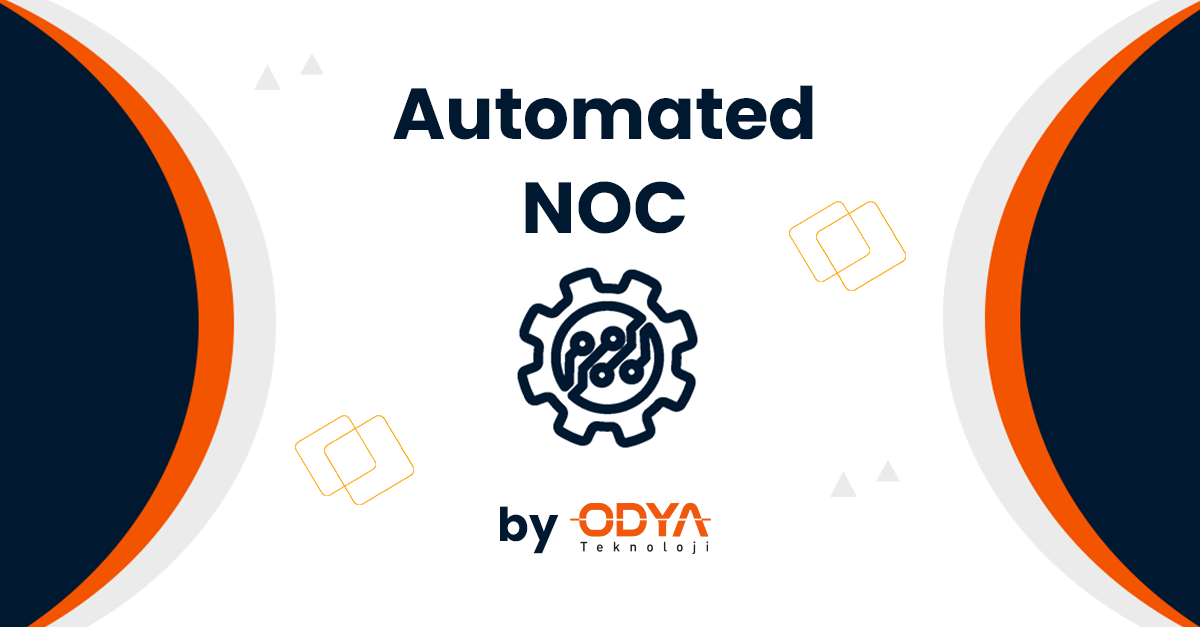24/7 NOC Service: Monitoring, Management, Response
ODYA Automated NOC
24/7 NOC Service ensures that an organization’s network, systems, and infrastructure are monitored, managed, and kept operational around the clock. With ODYA Automated NOC, you can perform proactive 24/7 monitoring in your IT environment, benefit from AI-powered incident resolution, and receive technical support at L0, L1, and L2 levels.
24/7 NOC Service: ODYA Automated NOC
24/7 End-to-End Monitoring
ODYA Automated NOC continuously monitors and analyzes all layers of your IT environment 24/7. It ensures uninterrupted tracking of components at every level of your infrastructure, enabling immediate intervention in case of potential issues.
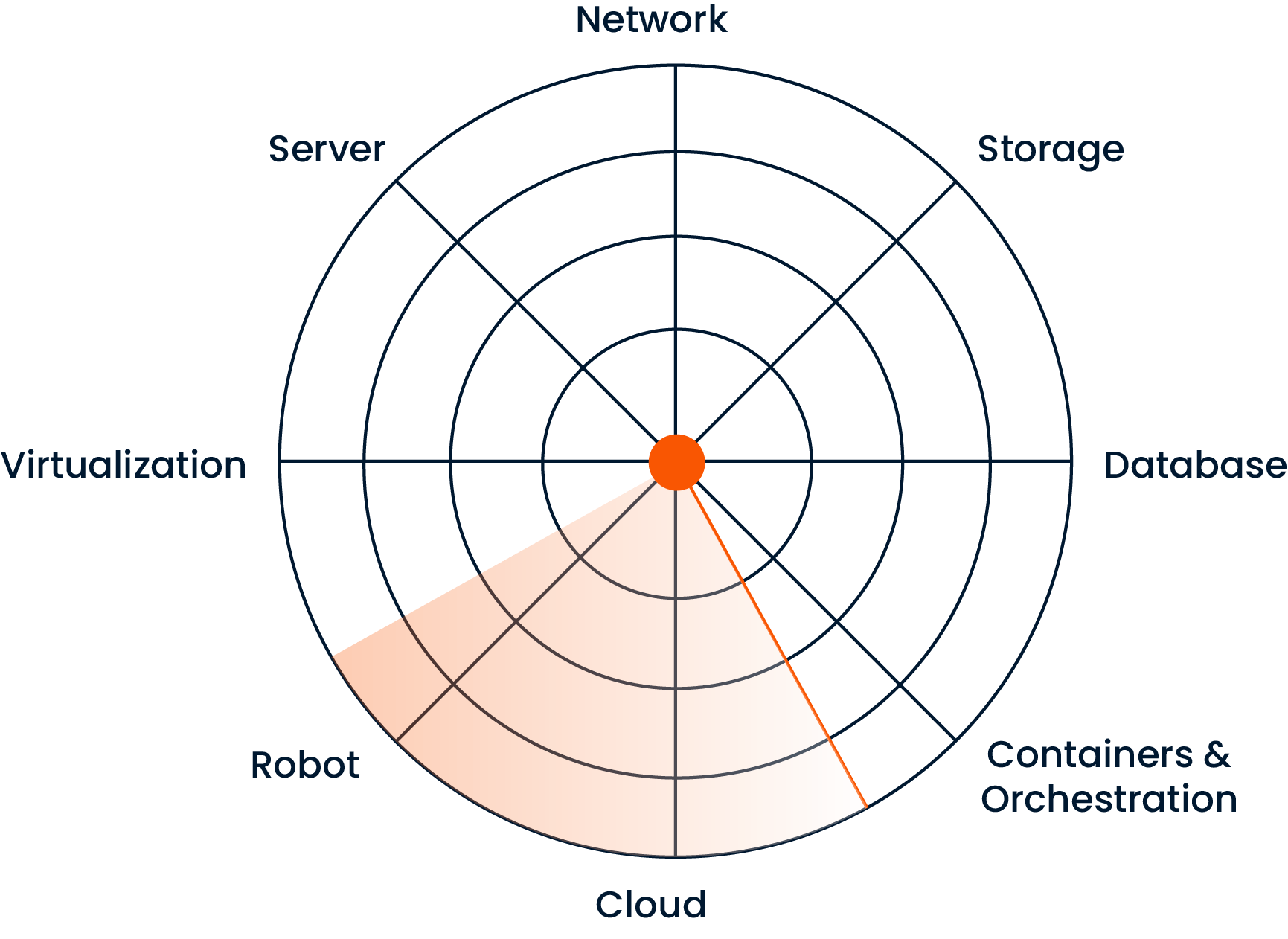
Centralized Alarm Management
By automatically converting alerts from monitoring systems into actionable notifications, it eliminates the risk of missed incidents. When ODYA Automated NOC detects an event, it promptly notifies relevant teams via written alerts or call-based notifications through the platform.
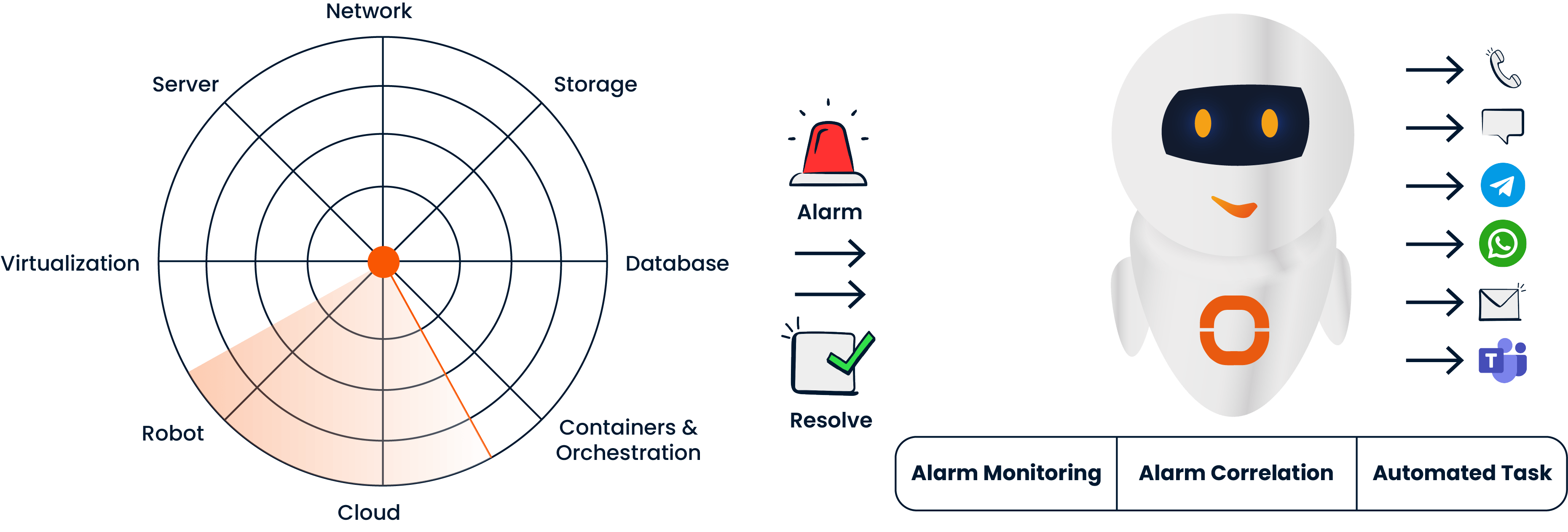
CMDB Management
ODYA Automated NOC automatically discovers your IT assets, maps their interdependencies, and continuously keeps the CMDB up to date—ensuring incidents are managed with the right context and accuracy.

AI-Powered Incident Management
Utilizing predefined rules and AI-driven scenarios, ODYA Automated NOC automates incident response actions. When previously encountered and documented “known issues” occur, the system instantly applies the corresponding “known solutions.”

Advanced Root Cause Analysis
Through proactive monitoring and advanced root cause analysis capabilities, it not only identifies issues but also prevents recurring or similar incidents in the future.
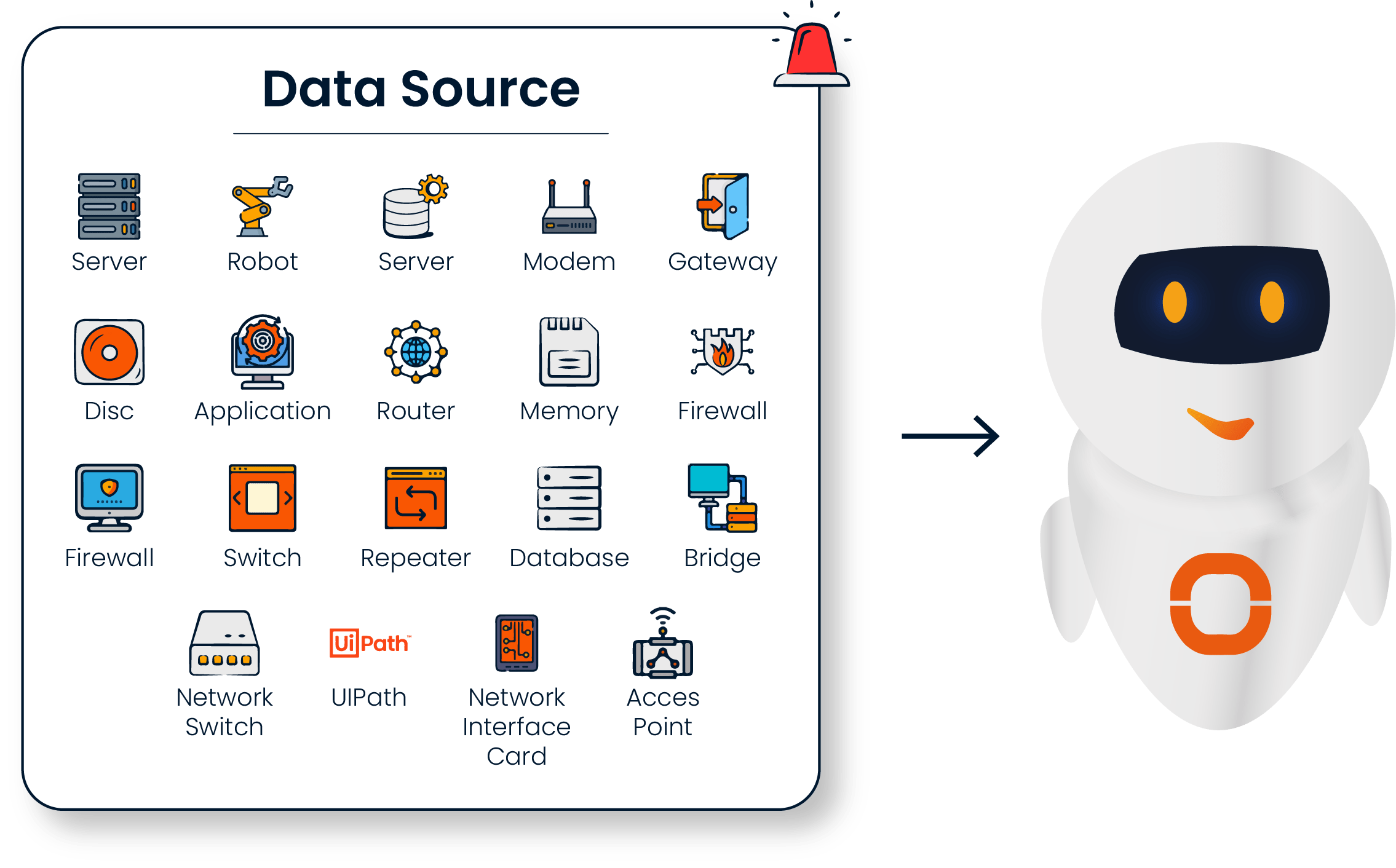
Centralized Knowledge Repository
ODYA Automated NOC aggregates, analyzes, and generates insights from large volumes of logs, metrics, event records, and performance data collected from various systems, providing a single source of truth for your IT operations.

Reporting and Documentation
Within 24/7 NOC services, reporting and documentation represent a structured and comprehensive process that underpins incident management, SLA monitoring, performance evaluation, CI health, and effective knowledge sharing. This function is essential for maintaining operational transparency, providing a clear overview of system status, and facilitating thorough root cause analysis of potential issues.

Transform Monitoring Data into Meaningful Insights!
ODYA Automated NOC collects, analyzes, and converts data from monitoring systems into actionable insights. It identifies the root cause of incidents, highlights critical resources, and enables rapid response to performance issues.
Service Support Levels

L0

L1
Accidents from monitoring systems and customer support calls; It is a technology that provides a basic solution within the framework of “known problem – known solution” (Known Error – Known Solution). Unresolved problems are assigned to L2.

L2
It is the person or technology to which complex accidents that cannot be resolved in L1 are addressed and resolved for the first time. The solution created is placed in the “known problem – known solution” matrix. Unresolved problems are assigned to L3.

L3
The level of support provided by the manufacturer/developer.

L0
It is the technology that first meets the accidents and support calls from the monitoring systems and transfers them to the relevant teams for a solution. The call is received, recorded, forwarded and its status is followed.
Accidents from monitoring systems and customer support calls; It is a technology that provides a basic solution within the framework of “known problem – known solution” (Known Error – Known Solution). Unresolved problems are assigned to L2.
L1


L2
It is the person or technology to which complex accidents that cannot be resolved in L1 are addressed and resolved for the first time. The solution created is placed in the “known problem – known solution” matrix. Unresolved problems are assigned to L3.
The level of support provided by the manufacturer/developer.
L3

ODYA Automated NOC Plans and Pricing
Carefully curated capabilities for your IT environment
Basic
- Already Implemented
- Integration
- Monitoring
- Notification (Call + SMS etc.)
- Daily System Check
- Update/Upgrade
- Reporting
- Node Based Pricing
Professional
- Implementation
- Monitoring
- Notification (Call + SMS etc.)
- Daily System Check
- Update/Upgrade
- Reporting
- Node Based Pricing
Enterprise
- Implementation
- Monitoring
- Notification (Call + SMS etc.)
- Enrichment
- Auto Remediation
- Auto Resolve
- Reporting
- Node/Workflow Based Pricing
Premium
- Implementation
- Monitoring
- Notification (Call + SMS etc.)
- Enrichment
- Auto Remediation
- Auto Resolve
- Advanced L2 Support
- Reporting
- Node/Workflow Based Pricing
Resources that help you to see the benefits of
ODYA Automated NOC!
Our NOC service covers 24/7 monitoring of your organization’s entire IT infrastructure, including network devices, servers, applications, and cloud services. Additionally, OT and IoT systems can be included in the scope of service if needed.
Servers, network devices (switches, routers, firewalls), databases, applications, virtualization environments, cloud services, and other systems that affect critical business processes are monitored. Physical devices or IoT systems in facilities can also be added when required.
When an alarm is triggered, the NOC team is automatically notified. L0, L1, and L2 level interventions are applied:
- L0: Alarm logging and automated response
- L1: Quick response and resolution
- L2: Advanced analysis and resolution, coordination with relevant teams when necessary
Through alarm filtering and prioritization, only critical and real-time alerts are delivered to the team. Unnecessary or repetitive alarms are blocked, enabling the team to focus only on important incidents.
Incident management works with both automation and human intervention. Critical situations are quickly resolved through AI-powered automated actions, while more complex issues are manually handled by the NOC team.
All alarms and incidents are recorded in a central system. Recurring problems are analyzed, root causes are identified, and coordination with relevant teams is ensured to provide long-term solutions.
Monthly and on-demand custom reports are provided. Trend analysis, capacity planning, and SLA reporting are performed to monitor and report the overall status of your infrastructure in detail.
Yes, when necessary, the NOC team intervenes in systems remotely or onsite. All access is carried out using secure protocols and is fully logged.
All data is transmitted in encrypted form, and access permissions are strictly managed. The NOC team operates in compliance with ISO/IEC 27001 standards and adheres to confidentiality policies.
SolarWinds, Zabbix, Nagios, Splunk, and other industry-standard monitoring tools are used. Tools are customized to fit the organization’s infrastructure, and integration between multiple platforms is provided.
Application performance monitors and user experience monitoring tools are used to track system response times, availability, and performance metrics. Issues are detected and resolved in real time.
The cost is determined based on the number of systems to be monitored, scope of service, support level, and the intensity of special requirements. A customized proposal is provided for each organization.
An SLA (Service Level Agreement) guarantees how reliable the service is and the response time for issues. Example: intervention within 15 minutes for a critical alarm, 99.9% uptime guarantee.
All incidents are logged by the system, and response times are measured according to the SLA. Reports are regularly provided to the customer, and performance is continuously monitored.
Contact us for detailed information about ODYA Automated NOC!





